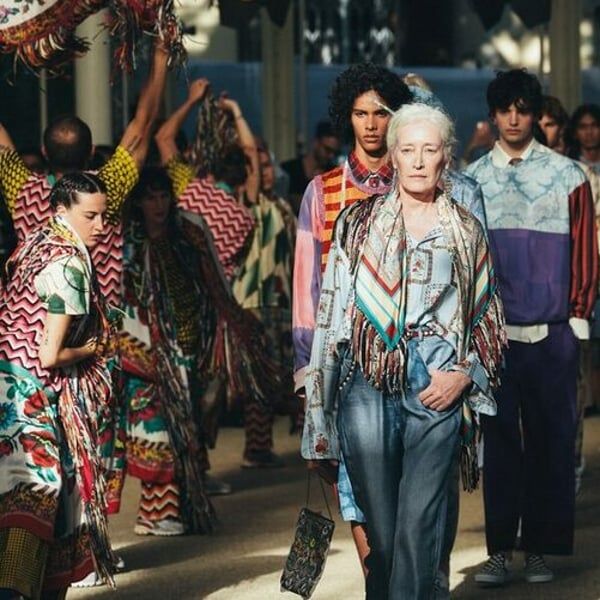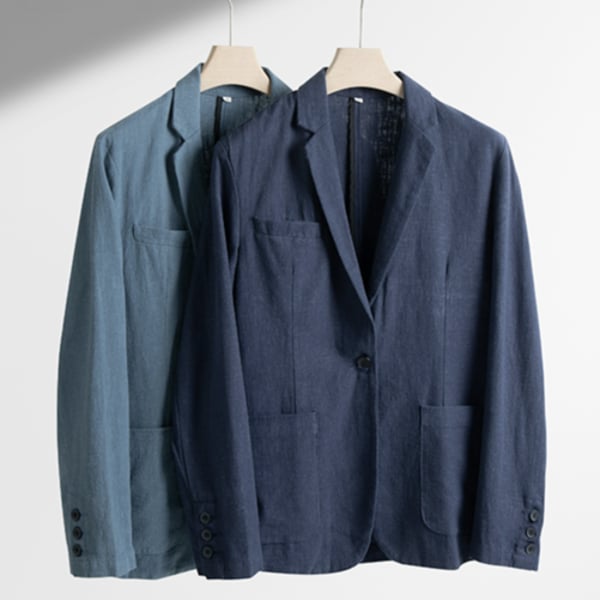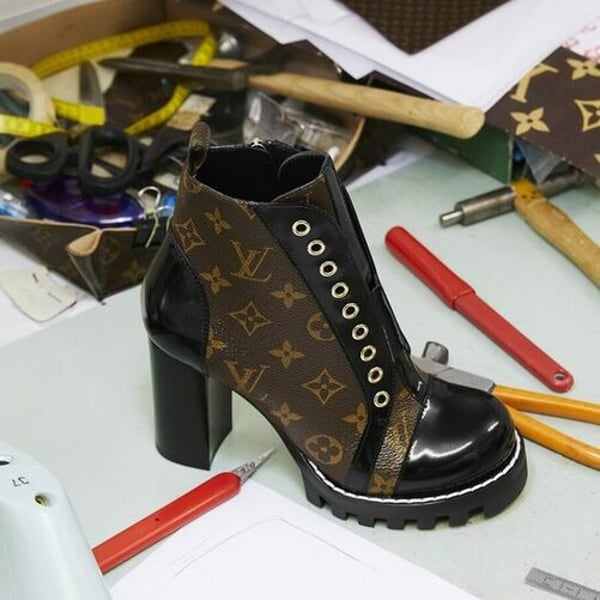“My silk scarves are like a caress on the body,” says Pierre-Louis Mascia. In the same vein, he conceived his first fashion show as a moment of suspended grace. Guest designer at Pitti Uomo, the French designer, a faithful exhibitor at the main men's fashion show, managed to transport the public away from their usual places during the show on Thursday night, offering a cheerful, fresh and exotic interlude with a spring collection -summer 2025 for men and women that was both rich and delicate.
“We are facing a world that is becoming tense. We are trying to soften the blow by bringing a little more softness with something more feminine,” says the man who was creative director of the Paris accessories fair Première Classe for nine years. and has worked for the footwear brands Robert Clergerie, Stéphane Kélian and Arche, among others.
“In a world where everyone is very exposed, you have to stay in the background and only show yourself from time to time. Come to the front when you have something to say. This show represents the progression of my work, it summarizes the last fifteen years , like the chapter of a book that closes to open another,” he explains.
The singer Mélanie Chartreux opened the show singing a song that seems to come from a distant land and time, while eight dancers, led by the Toulouse choreographer Pierre Rigal, begin a show, covered in long flower shawls and trimmed with fringes of different colors. fabrics. Their brightly colored T-shirts read “Bonjour tristesse” (“Hello sadness”) as they jump in a frenetic round of tribal dance.
When they disappeared, the first notes of Ravel's Bolero came out. It's show time! Pierre-Louis Mascia chose the Tepidarium Giacomo Roster's enormous Liberty-style Florentine greenhouse, which lets the sun's rays filter through the large glass roofs. He imagined the art school students invading the premises with their brushes and colors. Boys and girls arrived, with their drawing board or an old vinyl from the seventies under their arms, dressed in silk or cotton t-shirts-caftans, where the most varied prints were mixed in a harmonious picture, superimposed on skirts, which in turn they were worn over pants. .

Known for his incredible ability to capture a vision, the Toulouse designer is unmatched when it comes to thinking about an image and creating it from different designs, eras, motifs and colors, which once together seem obvious. His partner, Achille Pinto, a silk printer from Como, helps him create his daring collages, using increasingly new techniques resulting from constant research, such as the “faded gradations” proposed for the first time this season by superimposing a gradation on a silk discolored and velvety to the touch.
The impalpable silk trousers took on the appearance of faded jeans, the pleated tunics were reminiscent of saris and the light coats billowed over shirts and shorts made of silky fabrics. Colifichets, long necklaces and hair ribbons gave a hippie touch to some of these thirty looks, which were sometimes enhanced with wool jackets, tied at the waist like ethnic paintings, or bright details in reference to the East.
Other sets took us to a more distant past. Like these ultra-chic pajamas with micro-tie motifs, upholstered suits, always made of silk, gradient skirts, tied at the waist with a draping effect and, above all, these cashmere shawls with long fringes for a beautiful and antique look. A nostalgic vein emerged from the set, through this clash of colors and designs from the past.
“I was inspired by the Blue Rider (der Blaue Reiter), the avant-garde movement of German artists at the beginning of the last century. More than the artists, what attracted me was the idea of mixing all types of art. Basically, I am not stylist, I am a fashion designer,” says Pierre-Louis Mascia. “The idea was to come out of nowhere with a colorful and realized world, through a wide range of products and a wide palette that has been built over the years. It's just a matter of nuances,” he continues.

“With Achille Pinto, who works with some of the biggest names, we have nothing to envy them. We use the same technical know-how. It is still Italian luxury. Everything is proudly produced in Italy,” underlines the designer, whose products are located in the medium-high range with prices ranging from €300 for a t-shirt, to €350 and more for scarves, €650 for shirts and €700 for dresses.
The Rodez-born designer, who set up his studio in Toulouse, where he studied Fine Arts, began as an illustrator, working for Yohji Yamamoto and Romeo Gigli. He began his solo career in 2007 with a small series of printed silk accessories designed by Achille Pinto, who became his financial partner in 2018.
Today, its brand has a turnover of 8 million euros, compared to 7 million euros in 2022. In the first quarter, sales increased by 16%. A promising result given the current economic climate. Its product is distributed through some 300 multi-brand stores with “very attractive” resale prices, according to Giampiero Cozzi, commercial director of the Achille Pinto Group.
After opening stores in Milan and Portofino, Pierre-Louis Mascia has recently added a new address in Cannes. He opened a temporary store on the Croisette, which is now permanent. France, where it has a presence at Le Bon Marché, and Italy are its main markets, followed by Germany, its largest European market, which represents 50% of its total sales. Then come Asia (South Korea and Japan) and the United States. Scarves still represent half of its sales and the rest focuses on ready-to-wear. Women dominate and represent 70% of sales.
Copyright © 2024 FashionNetwork.com All rights reserved.

